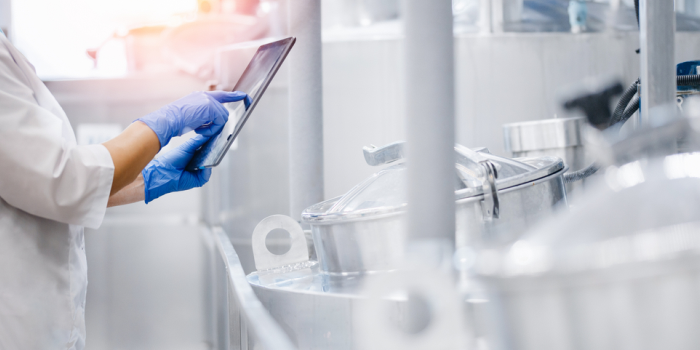How to Effectively Mitigate Food Safety Risks with CAPA
Food safety and quality are of utmost importance to ensure consumer well-being and the success of the food and beverage industry. In addition to the important human cost of foodborne illnesses, food recalls and crisis management situations can have significant economic implications for the food and beverage industry. Food recalls, for example, can result in substantial financial losses for food and beverage businesses that damage their reputation and consumer trust. In the United States alone, food recalls cost the industry an estimated $10 billion annually. Implementing Corrective and Preventive Action (CAPA) can help mitigate food safety risks and improve the overall quality of products.
What is CAPA?
A Corrective Action plan specifies the actions taken in response to a specific non-conformance or deviation from established food safety and quality standards. The process entails identifying the root cause of the problem, implementing corrective measures to prevent a recurrence, and monitoring the impact of these measures. It follows an iterative cycle of:
-
Analysis: the identification, analysis, and documentation of a problem
-
Corrective Action: implementing a corrective action to prevent recurring issues
-
Preventive Action: identifying potential hazards and implementing controls, through initiative-taking measures, to prevent potential food safety and quality issues
-
Continuous Improvement: improvements at an individual unit level or enterprise-wide through processes such as KAizen, TQM, and Lean Six Sigma techniques.
Implementing Corrective and Preventive Action (CAPA) can be challenging in the food and beverage industry, especially for larger companies with multiple facilities and a complex supply chain. The process requires the involvement and collaboration of all stakeholders, including management, employees, suppliers, and regulatory authorities.
A good strategy for employing the process entails management clearly defining the goals and objectives of the CAPA and assigning responsibilities for the implementation and monitoring of the plan. Inform all stakeholders of the CAPA and their roles in its execution through clear communication channels. The next step is to identify potential hazards and assess their risks. Accomplishing this requires analyzing hazards, reviewing historical non-conformance reports, and leveraging key stakeholders' involvement. Identifying potential hazards allows the application of control measures to prevent their occurrence.
Once implemented, monitoring the effectiveness of control measures and making any necessary adjustments is crucial. By conducting regular audits and inspections, as well as using digital technologies, such as intelligent sensors and process control systems, it is possible to ensure compliance.
Performing a Root Cause Analysis
A root cause analysis should be conducted following a deviation or non-conformance to identify the underlying cause. In addition, it may also be used to determine the root cause of a problem in which deviations have not occured. Control measures can be instituted to prevent reoccurences once the root cause is determined. Employee interviews, reviewing process control data, and performing experiments are various analytics methods utilized to decipher a problem's cause.
In root cause analysis, the starting point often uses the Five Whys methodology. The Five Whys involve asking a sequence of questions beginning with the word "why" to uncover the root cause of the problem. For example, suppose there is a problem with the quality and safety of a food and beverage product. Consequently, the five whys might include asking why the problem occured, why it was not detected earlier, why it was not prevented, etc.
Visual representations of the potential causes of a problem can aid in identifying the root cause or causes. An example of root cause analysis using graphic illustrations is fishbone diagrams, also known as Ishikawa diagrams (cause-and-effect diagrams). Fishbone diagram constructions resemble the bones of a fish, with the problem represented at the head and the potential causes reprensented at the bones.
The Role of Digital Solutions and Effective Sanitation Control in Ensuring Food Safety and Quality
Food and beverage companies can monitor and track CAPA implementation with the help of digital solutions, such as cloud-based software and smart digital process control technologies. Intelligent digital process control technology helps monitor various aspects of food and beverage production, such as temperature, humidity, and pressure. Consequently, real-time data analysis assists in identifying potential issues before they become a problem. In addtion to providing real-time data and insights on process control, these technologies can enable timely and effective corrective actions. For example, these technologies can alert operators to deviations from established standards, allowing them to take corrective action promptly.
In addition to implementing Corrective and Preventive Actions, an environmental monitoring program and sanitation control measures can further enhance food safety and quality. Environmental monitoring involves regularly assessing the environment in which food and beverages are processed, including the air, water, and surfaces, to ensure that it is free from contamination. A rigorous monitoring program can identify potential sources of contamination and permit timely intervention in the manufacturing and storage of food products. Sanitation control measures, such as regular cleaning and disinfection of food processing equipment and facilities, can prevent the spread of pathogens and other contaminants.
Implementing these programs can prevent the spread of harmful biological hazards and other contaminants, which can cause foodborne illness. It is possible to accomplish this through digital solutions and other technology, which can alert food safety personnel to potential problems and allows them to act quickly.
Regulation and Compliance
Achieving food safety and quality requires compliance with regulations established by agencies such as the Food and Drug Administration (FDA), the United States Department of Agriculture (USDA), and the Global Food Safety Initiative (GFSI). Compliance with regulatory and audit requirements is an essential component of a CAPA program. The Hazard Analysis and Critical Control Points (HACCP) system effectively ensures regulatory and audit compliance. This system aims to identify potential hazards and implement controls to prevent them from occurring. Incorporating the HACCP system is a widely adopted industry best practice and a requirement by most regulatory agencies in the food industry.
It is also possible to perform a Failure Mode and Effects Analysis (FMEA) as part of a CAPA program. A vital aspect of this process is identifying potential failure modes and their effects and implementating control measures to prevent or mitigate these failures. Utilizing FMEA makes it possible for food safety personnel to identify potential issues before they occur, which can help avoid food recalls and crises. Compliance with these regulations allows food and beverage companies to demonstrate their commitment to food safety and quality, thus promoting consumer confidence.
Training and Development
Employees should receive training on CAPA principles to assist them in performing their assigned tasks efficiently and effectively. Food and beverage CAPA teams require robust training programs tailored to their specific needs. Training empowers team members to perform corrective and preventive actions effectively and creates a culture of continuous improvement.
Conclusion
Implementing Corrective and Preventive Actions, digital solutions, effective environmental monitoring, and adequate sanitation control can improve food safety and quality. In addition, it can help food and beverage organizations avoid food recalls, manage crises, and ensure compliance with regulatory standards. The success of a CAPA depends on the commitment and dedication of all stakeholders.
Have you implemented smart, digital solutions for environmental monitoring and sanitation control?
Contact us to find out how Novolyze can help you enhance food safety and quality through digitalization.





